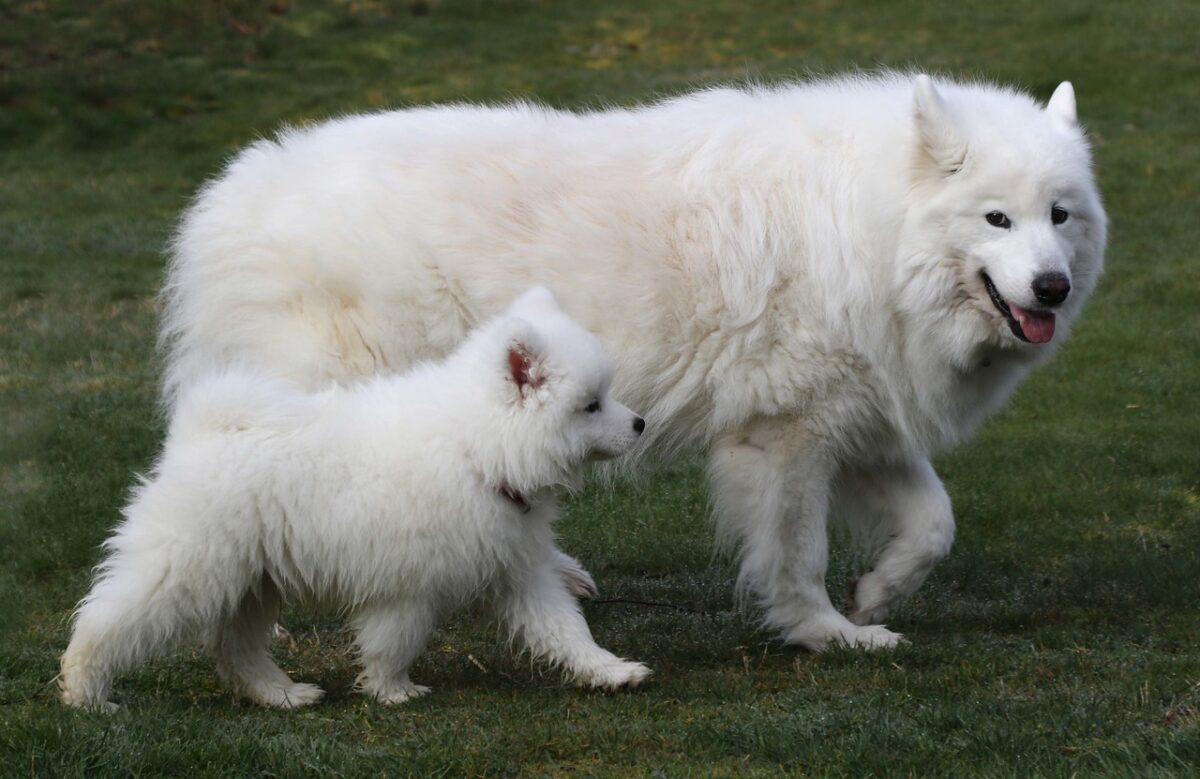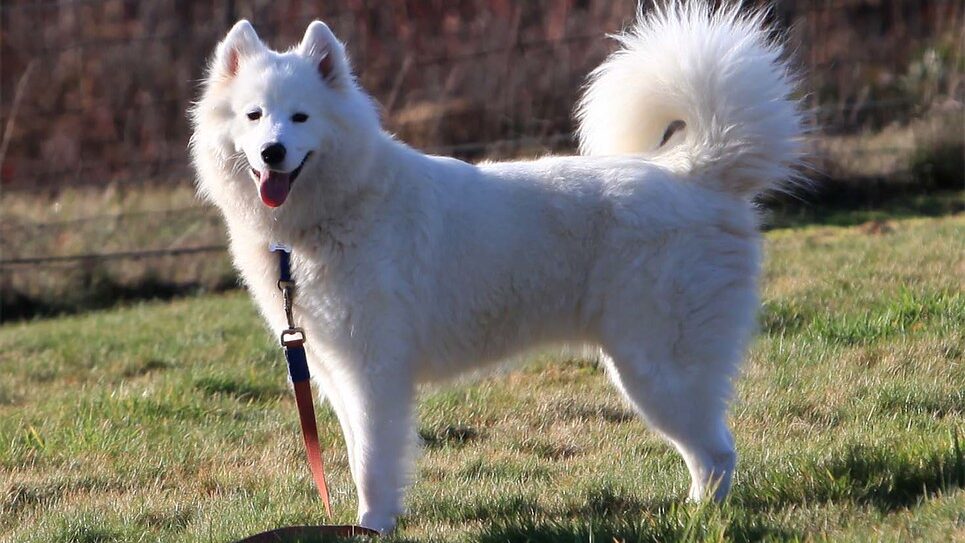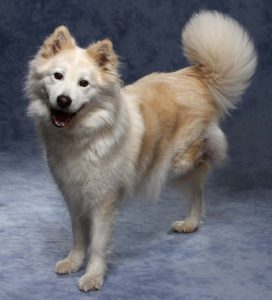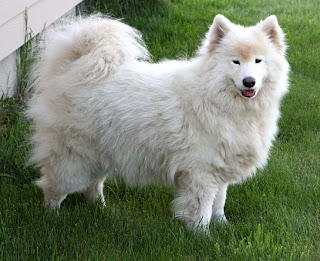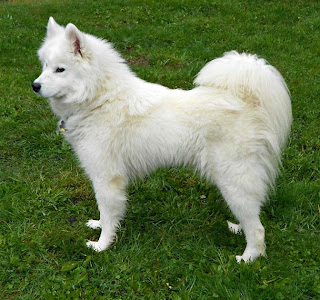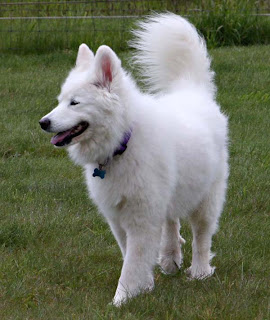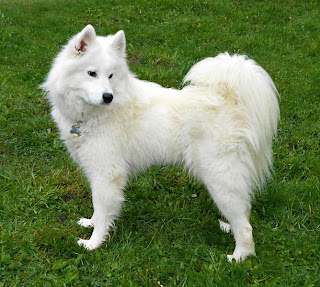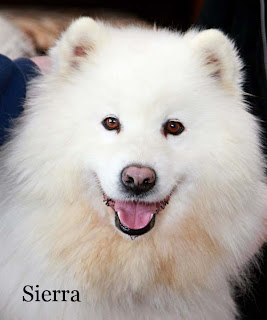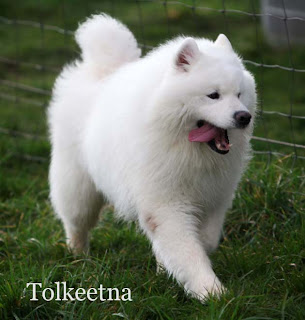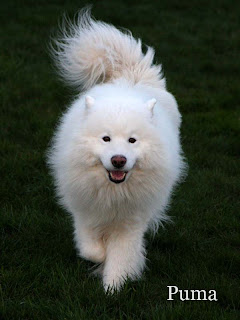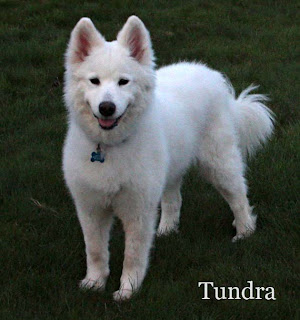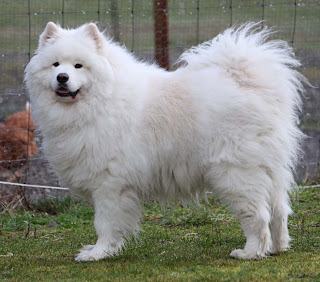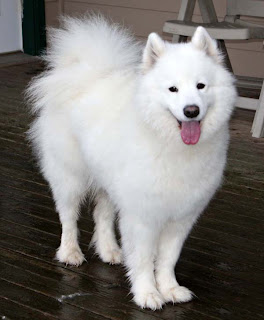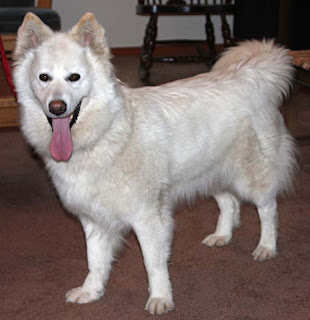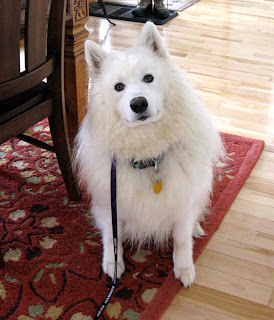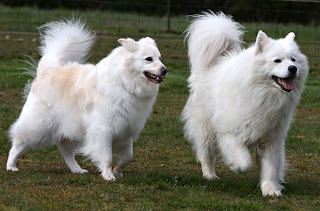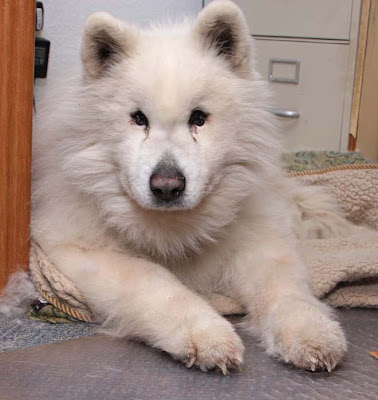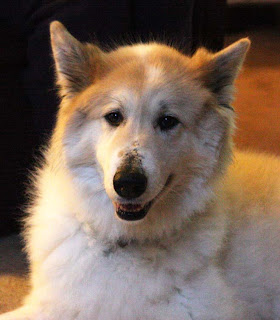September 2011
It has been quiet in rescue since April, and it gave us all a nice rest. Rescue doesn’t give many vacations and we enjoyed it while it lasted. Meanwhile the applications kept coming in and as of now we have a waiting list of almost thirty families.
A message from a woman in southern Idaho arrived telling us about a friend of hers who needed help. The downturn in the economy has hurt a lot of people, and her friend has been living on unemployment since she was laid off a very good job with a Seattle hospital. Now her home is in foreclosure and she can’t afford vet care for her two senior dogs. Her friend described it as a “severe neglect situation” so we called to see if we could help. The owner has lived with two Sammies since they were puppies, and now they are 10 and 13 years old. She very reluctantly and tearfully signed over the dogs and we took them to our vet.
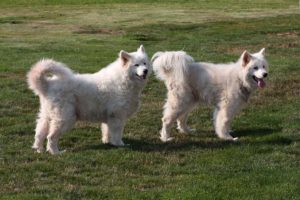
“Severe neglect” was too strong a term for what we found. While they haven’t been given vet care and have some issues, they were fairly healthy and there were no mats in their coats. They both have a growth on one eye and both have dental issues; Chip needs his teeth cleaned and Ozzy has an abscess from a broken tooth. Both of them have yeast infections in both ears. The younger dog, Chip, had TPLO surgery on his leg a few years ago and now the other knee is weak. The older dog, Ozzy, was previously described to us as barely able to walk. He is as stiff as you would expect a 13 year old dog with no exercise to be, but he is getting stronger by the day because we make him go out and walk around the yard. The two of them played together, rolling around, for about 5 minutes on the evening of the second day here, so the exercise is helping. It could be their nutrition wasn’t good and now they are getting better food.
We’ve had many, many dogs who were surrendered by people who didn’t care for them, but this was different. We feel everything we have seen here shows an owner who genuinely fell on hard times even though she was trying to keep things going. She is crushed that she had to give up her dogs so they would get vet care. If she could find appropriate housing we think she would still be the best home for them. What will we do? We don’t know yet. Obviously two senior dogs who are tightly bonded to each other would be difficult to place. Hopefully next month’s report will be more positive.
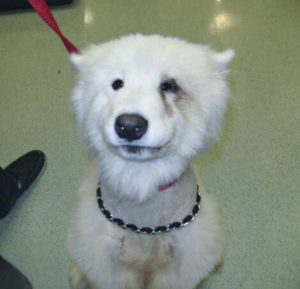
Just before this newsletter’s deadline we heard of a 1-1/2 year old female named Rory at the Oregon Humane Society. She has been there for a while because they had to do surgery for an in-grown eyelid. It looks as though she had been shaved or clipped badly. Melissa has been in contact with the shelter, but once again they feel they can do a better job of placement than rescue, so we may not be able to get her. On the other hand, if they do their usual job the dog will return and we’ll be able to get her then.

